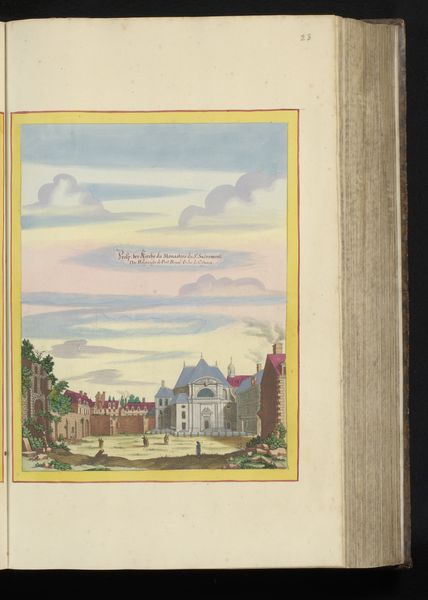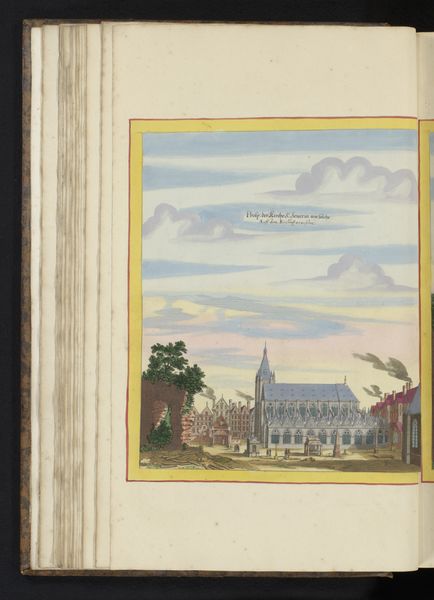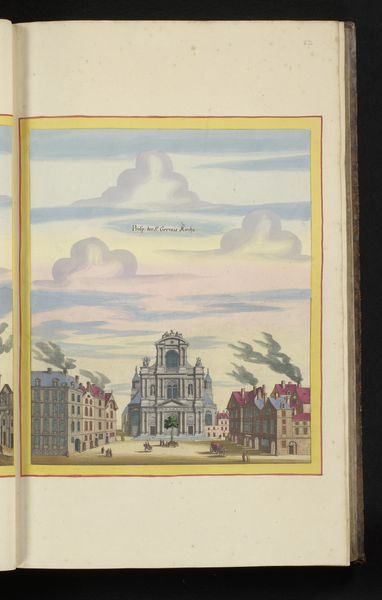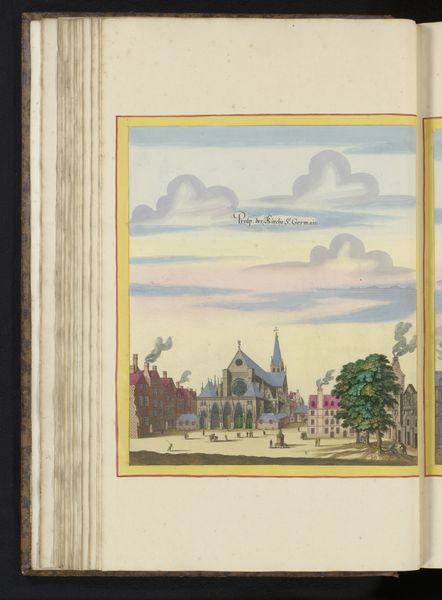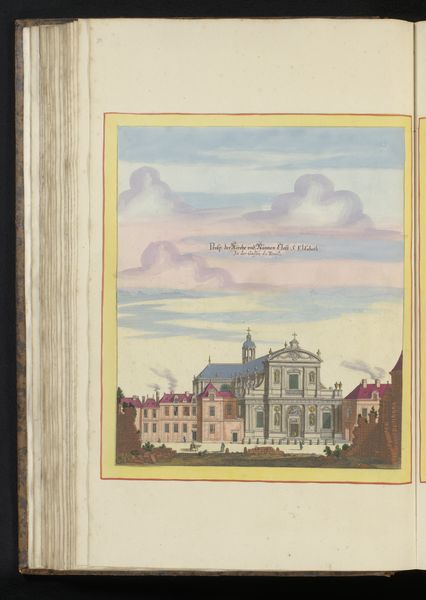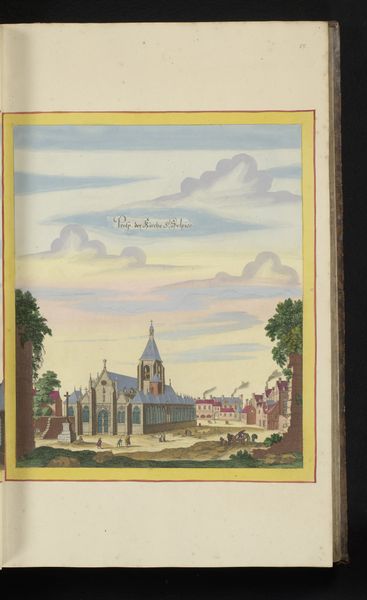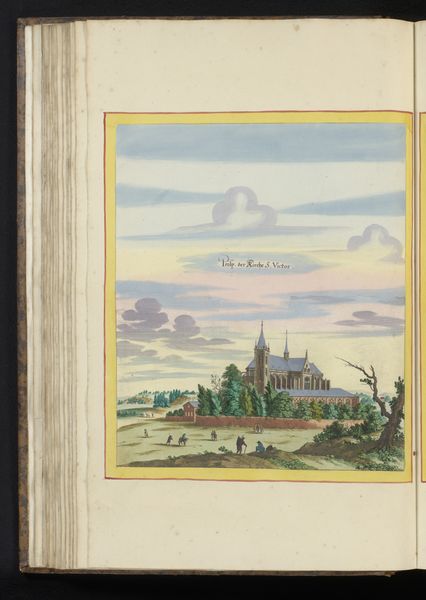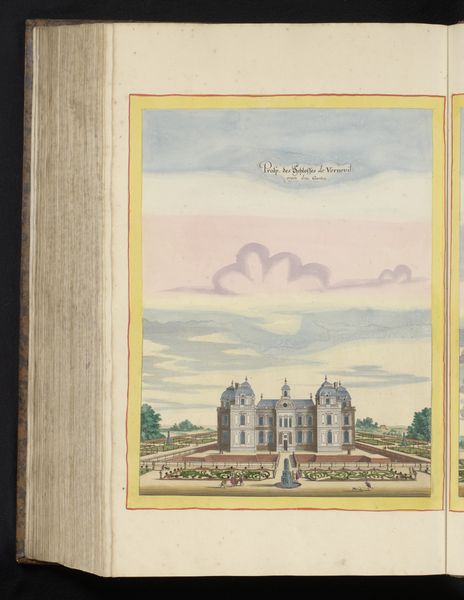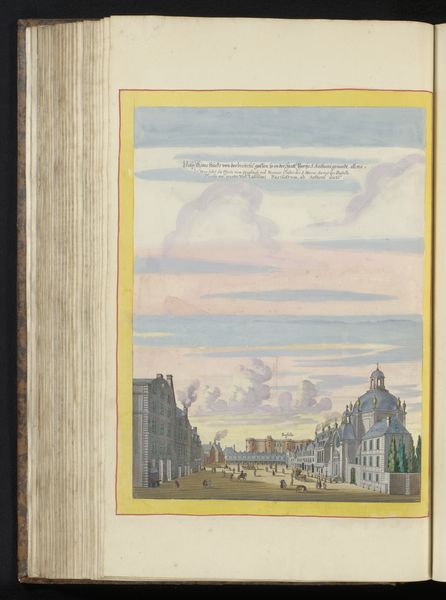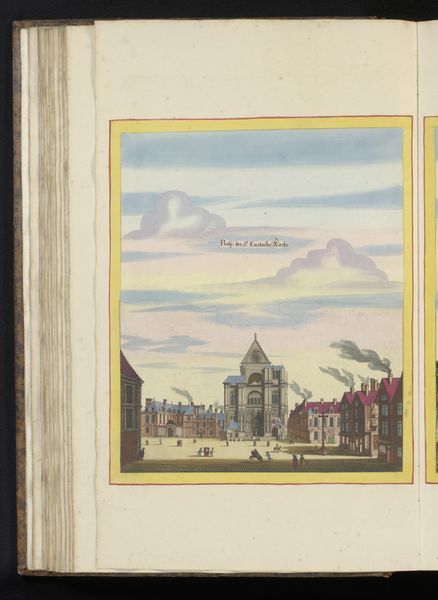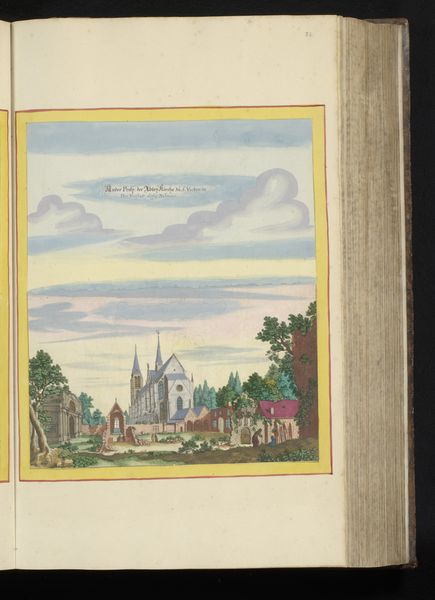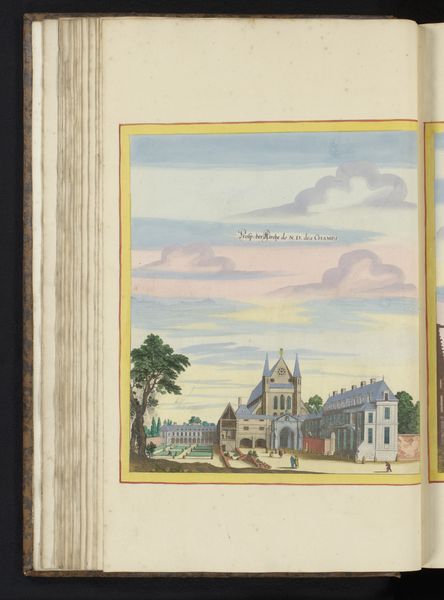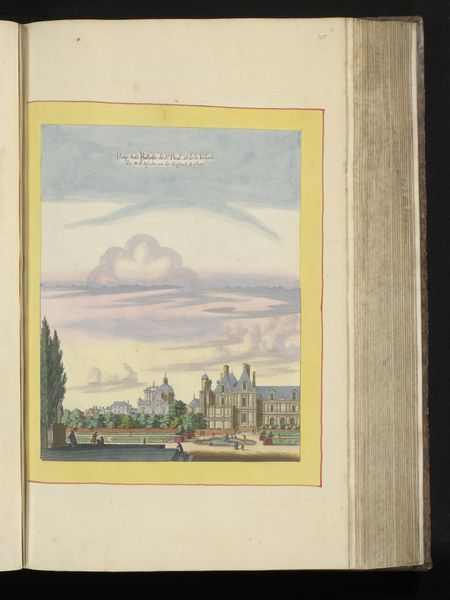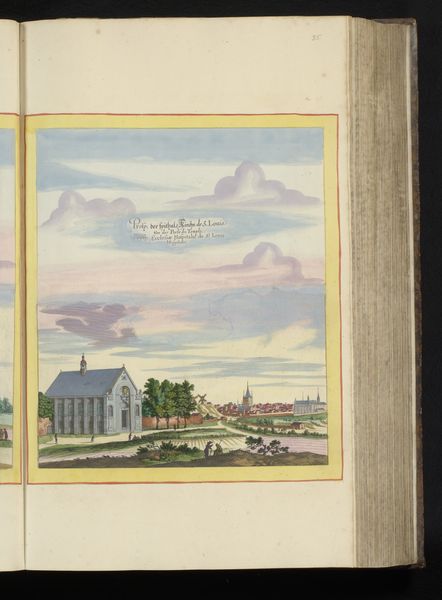
drawing, watercolor, pen
#
drawing
#
baroque
#
landscape
#
watercolor
#
coloured pencil
#
pen
#
cityscape
#
watercolor
Dimensions: height 331 mm, width 282 mm, height 534 mm, width 330 mm
Copyright: Rijks Museum: Open Domain
Curator: Here we have Matthäus Merian the Younger’s “View of the Church of Saint-Paul-Saint-Louis in Paris," dating back to 1655. It’s a captivating drawing, created using pen, watercolor, and coloured pencil, now residing here at the Rijksmuseum. Editor: Well, right off the bat, it feels almost like looking into a meticulously rendered dream. There’s something quite serene and balanced about the composition, though perhaps a touch formal. What's most striking is the softness of the colours, almost ethereal against the clear structure. Curator: Indeed. Merian’s baroque style lends that structural clarity you noted. But remember the context; cityscape depictions were increasingly vital. Prints and drawings helped disseminate information about cities and architectural marvels—serving both practical and political purposes. This was the age of absolutism, where powerful displays of architecture reinforced authority. Editor: Right, the urban image as propaganda. Still, what resonates with me isn't the grand political narrative, but how Merian captures the specific light – the hazy, late afternoon glow illuminating the baroque facade. It makes me wonder what he felt about Paris itself while rendering each stone and cloud. Curator: Good point. Beyond documentation, this view presents Paris as a burgeoning European power, literally building a grand future. Saint-Paul-Saint-Louis was a Jesuit church. Commissioned under Louis XIII and completed in 1641, it stood as a symbol of renewed Catholic vigour. Editor: The ruined walls on the right, though… They hint at another story, like a fading echo of an older city being absorbed or erased by the new ambitions. Are those the remnants of a previous structure on that site, perhaps? Or is that purely artistic license? Curator: It adds complexity, doesn’t it? Paris was, in reality, a chaotic, layered palimpsest of old and new. The drawing acknowledges that while still emphasizing the forward momentum embodied by the church’s imposing presence. Merian’s from Basel; his view, literally and figuratively, is perhaps that of an outsider looking in. Editor: Perhaps. It's like he is suggesting history is always being built over. Layers of intentions, brick by brick... Well, now when I see it I feel both calmed by the mastery, and also subtly challenged by what I don't see, those silences that history leaves between what is remembered and forgotten. Curator: A wonderful insight to leave us with. It shows us the role of cityscapes were as much about selective remembering as about accurate record keeping.
Comments
No comments
Be the first to comment and join the conversation on the ultimate creative platform.
